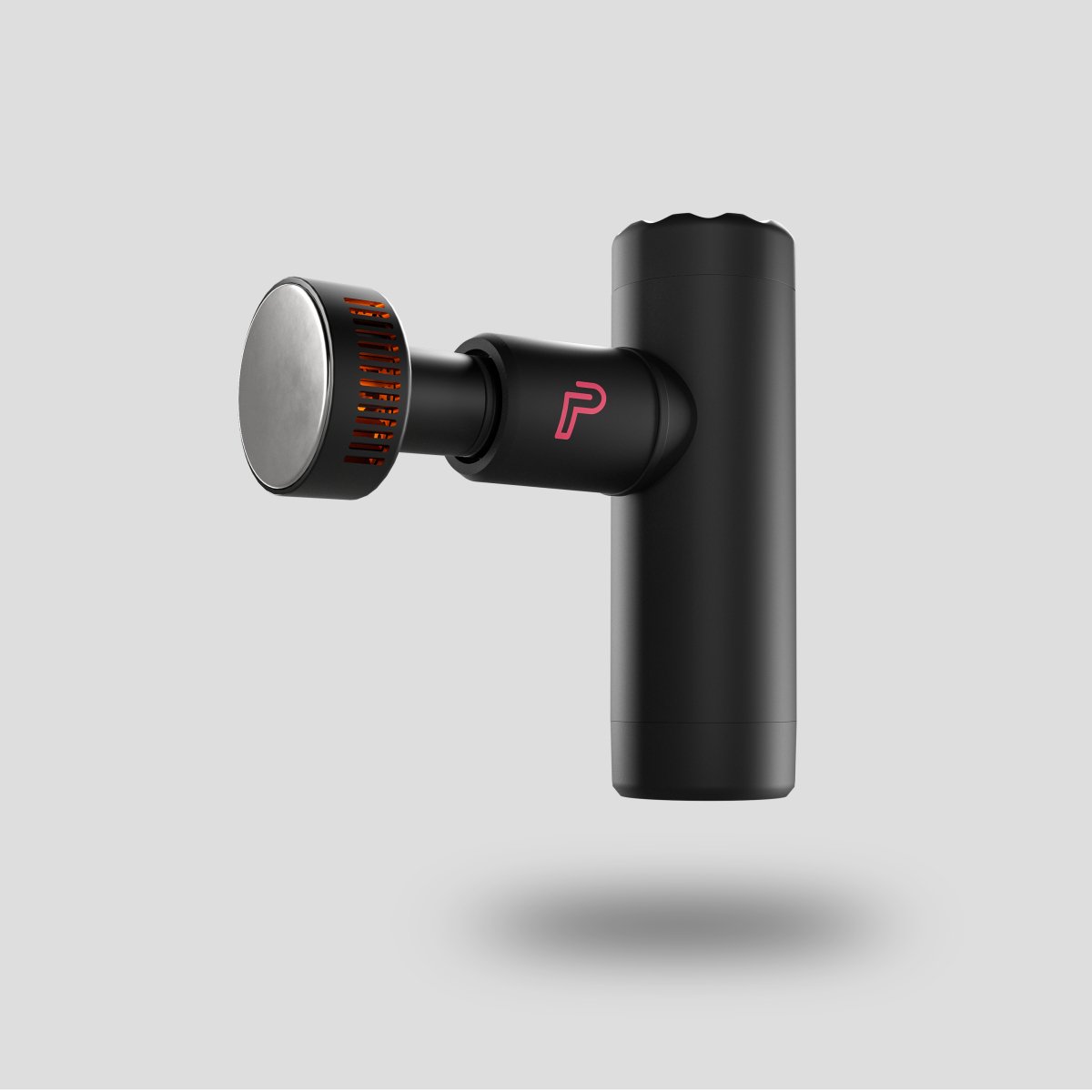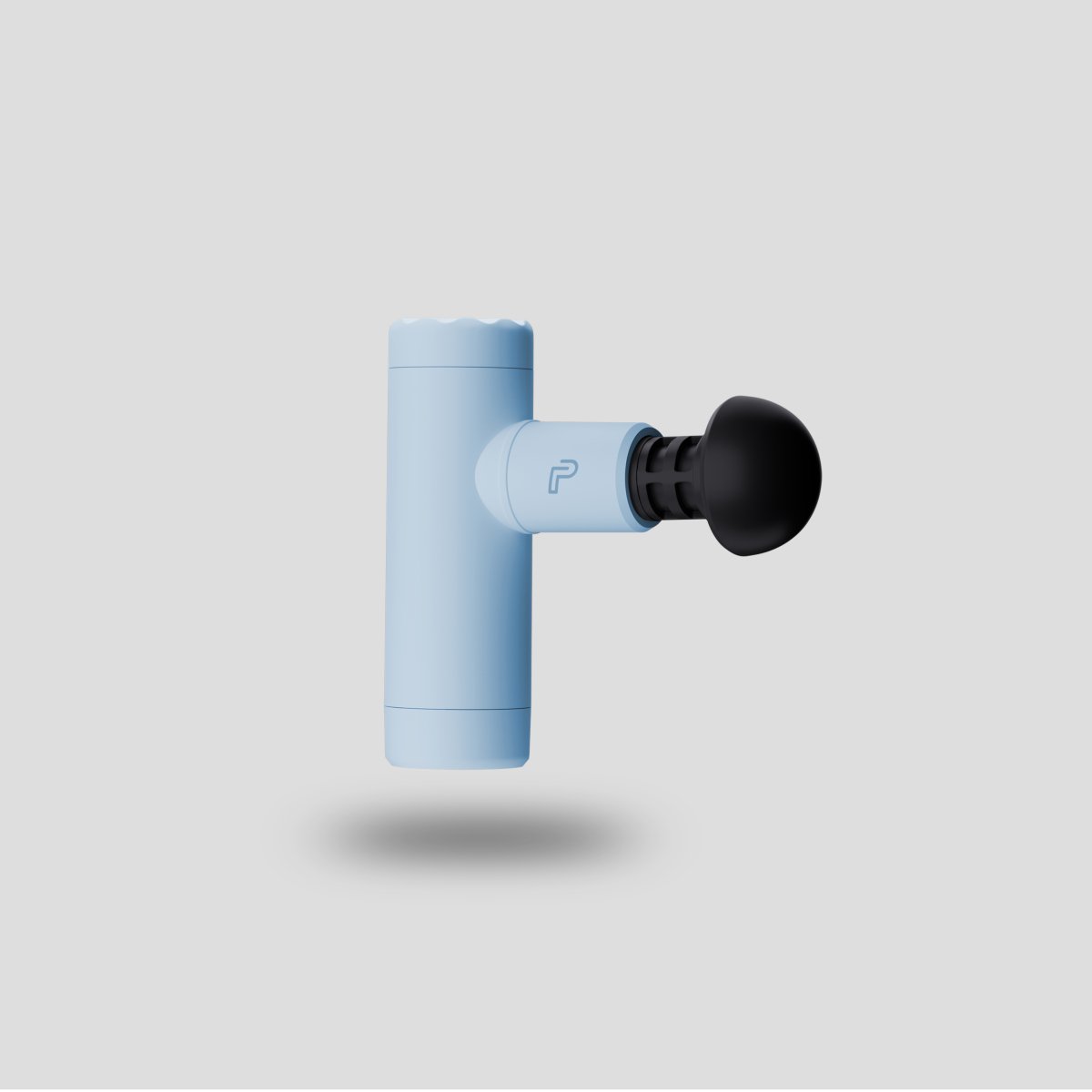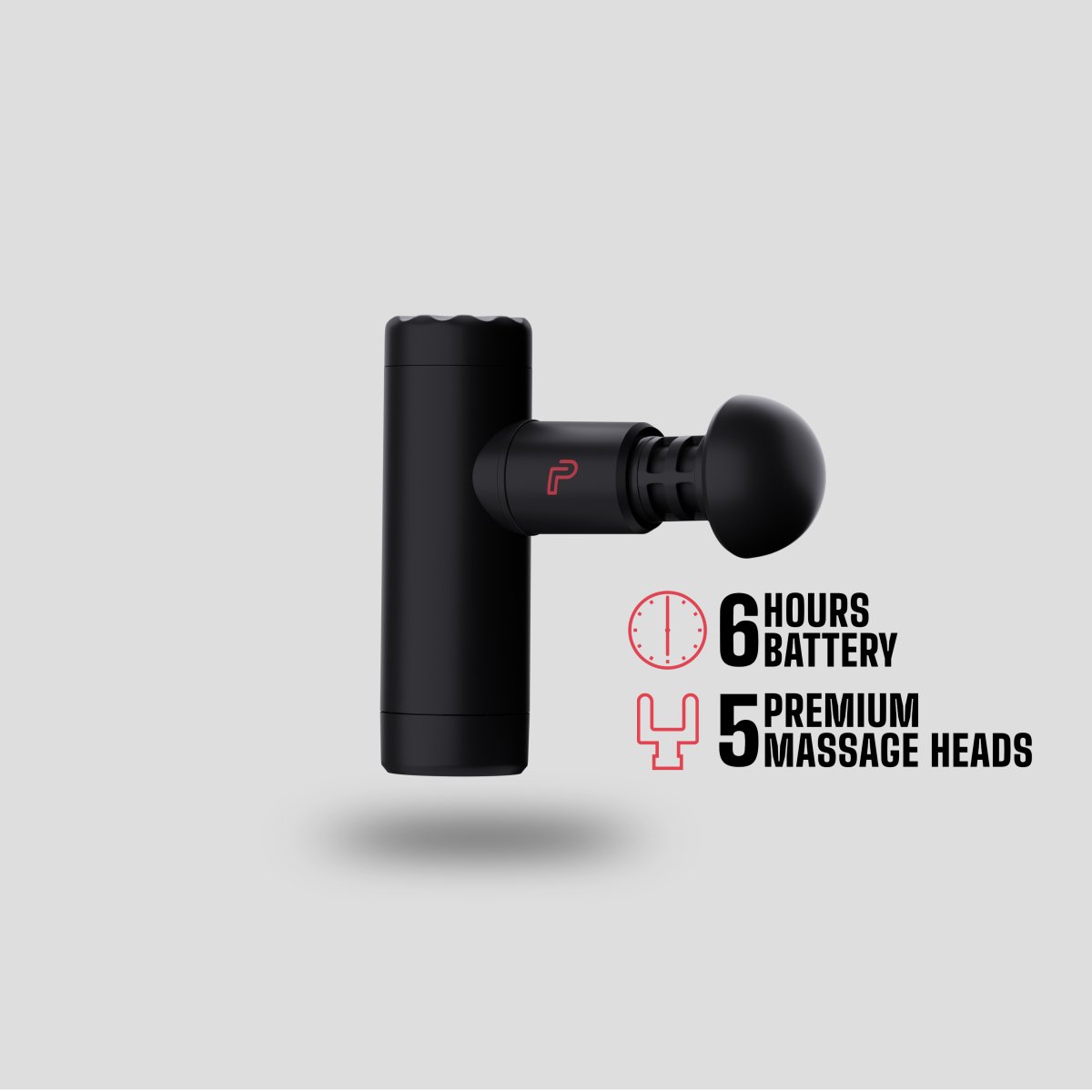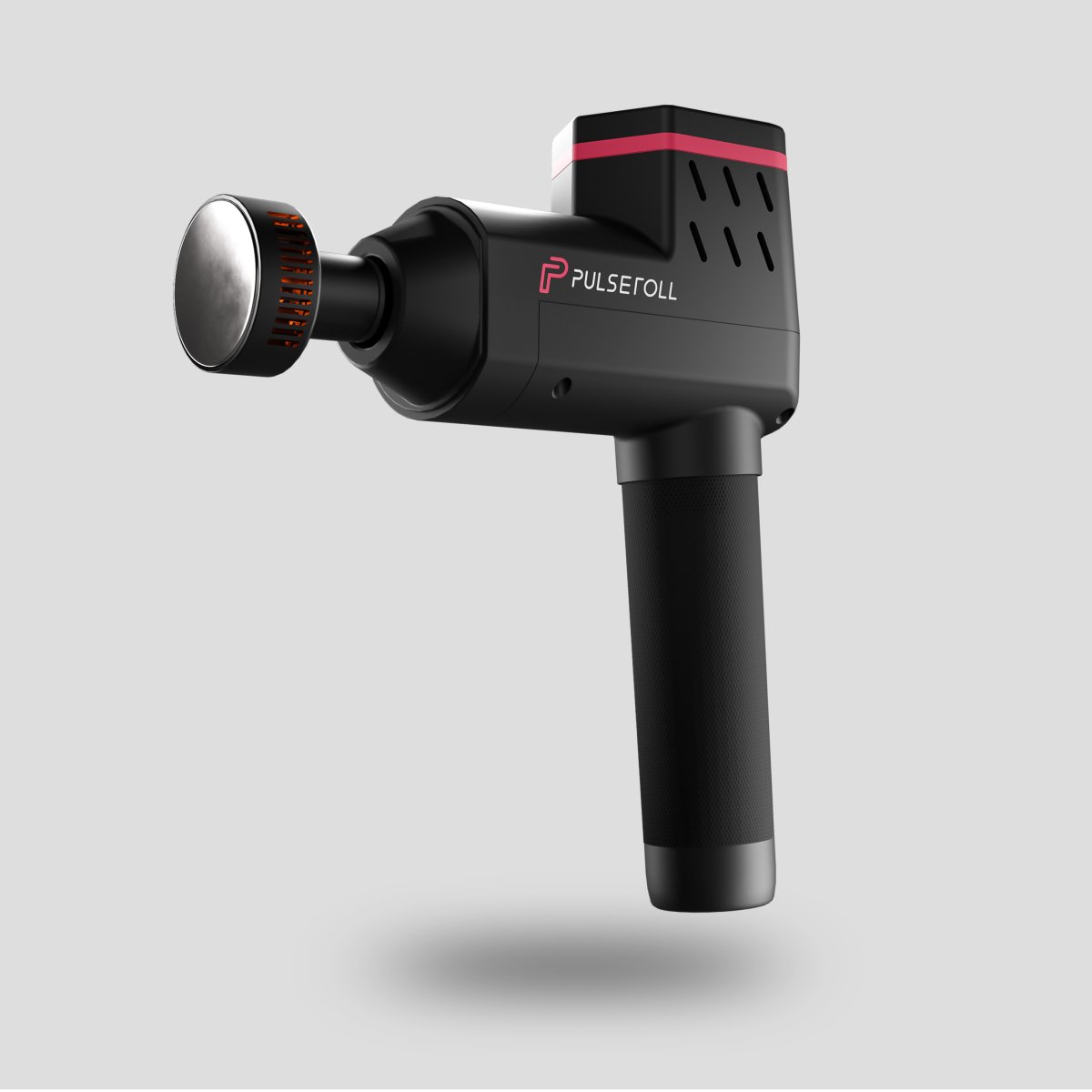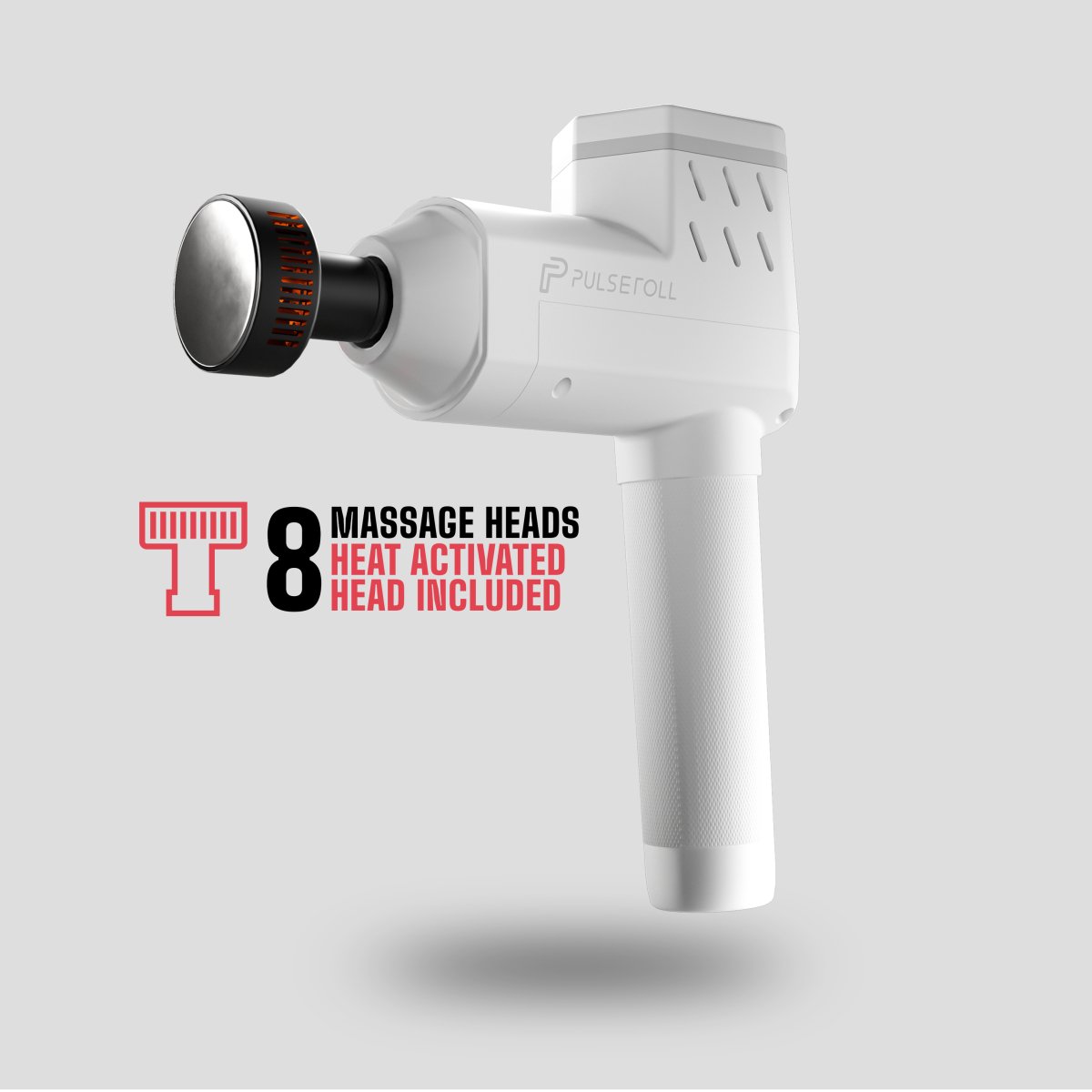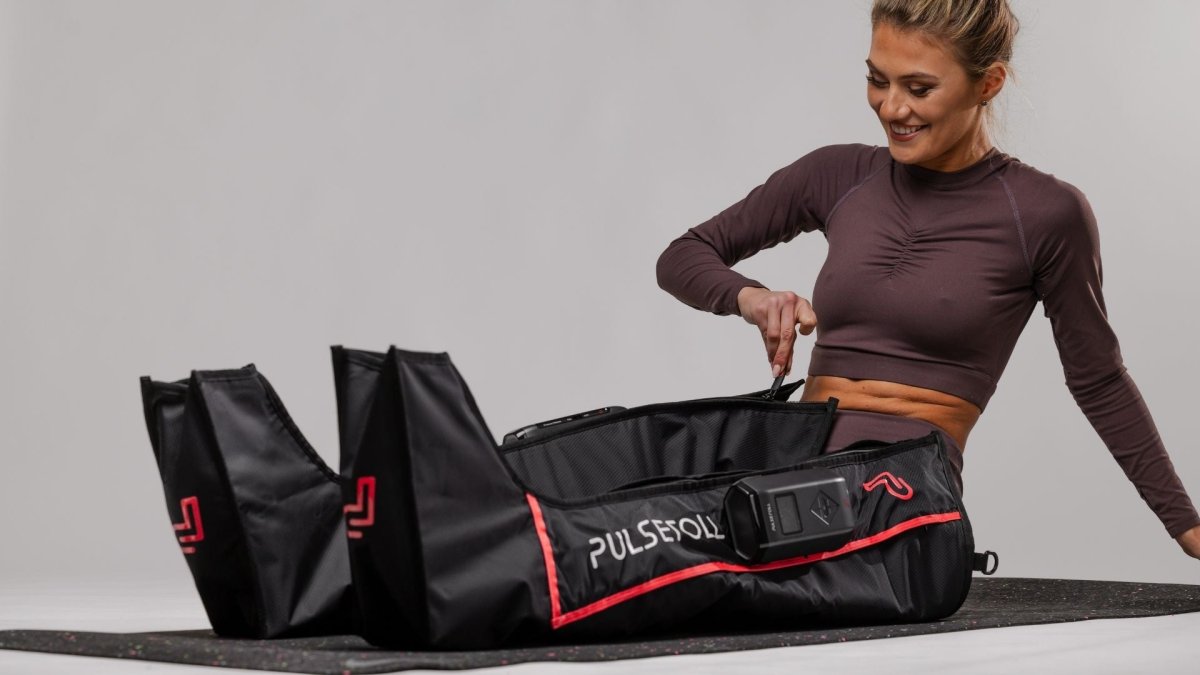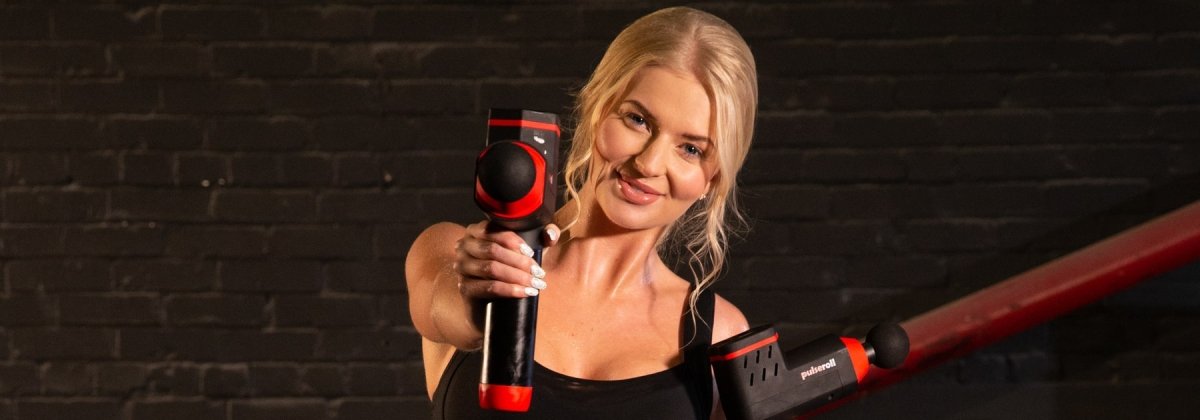It is fairly common when trying a new workout, set of exercises, or increasing weight during a specific workout, that your muscles tend to really feel the effects afterwards. Typically, delayed onset muscle soreness occurs a couple of days after training – as many of us know! This is where the muscle fibres tear, which therefore inflames the area and ultimately causes the pain.
It is important to not let this slow down your progress or put you off training. By investing in a fitness foam roller and following these exercise recommendations, you can quickly ease soreness to get you back up and running (literally) in no time!
The Pulseroll vibrating foam roller uses vibration technology to get deep into the muscle tissue, providing benefits similar to a sports massage. It works by breaking up knots and sore spots in the muscles. This not only eases soreness but can also improve flexibility and range of motion, as well as preventing future injury.
Read on to learn more about these helpful exercise recommendations for you and your vibrating foam roller.
Back
Back pain is a very common problem, not only in the sporting world but also if you’re regularly sat at a desk all day. Your back muscles really take a beating in your everyday life which is why it is so important to recover properly.
Follow these simple steps when using your foam roller:
- Try lying on your back with the foam roller positioned underneath your shoulder blades
- Place your feet shoulder width apart
- Apply pressure and slightly arch your back over the roller
- Gently roll back and forth, not going too low down your back
- Find trigger points and hold for 30 seconds.

Arms
The arm consists of different muscle groups, which all have different purposes. You’ll feel muscle soreness mostly in the biceps and triceps, which will need the most taking care of. The triceps (also known as triceps brachii) is a large muscle on the back of the upper arm. It is the muscle primarily responsible for the extension of the elbow.
Foam rolling exercises for the triceps can actually be performed while sitting:
- Simply place your foam roller on a table in front of you
- Then place the back of your upper arm on the foam roller right above your elbow
- Gently lean from side to side.
Legs
The legs also consist of many different muscle groups: from the glutes right down to the calves, they all need looking after. Located at the rear of the upper leg, the hamstrings are an extremely important part of the body as they help to propel the body forward during explosive movements.
You can use the foam roller on both legs at the same time:
- Sit on the ground and place the foam roller under your thighs
- Extend both legs out in front of you
- Place your hands on the ground behind you for balance and push up so that your weight is supported by your hands
- Apply pressure on the foam roller and slowly roll back and forth

Shoulders
We put so much pressure on our shoulders and upper back in our day to day lives, therefore it’s extremely common to experience shoulder pain. The shoulder actually has about 8 muscles!
To foam roller the side of your shoulders:
- Lie on your side and place the foam roller underneath you between yourself and the floor
- Apply pressure and gently roll up and down.

Chest
The chest may not be classed as one of the most common muscle groups to work on, but it is equally as important!
- Lie on the floor with your stomach to the ground and stretch your arms out either side
- Place the foam roller under one arm and pull it tight against your body
- With the other arm, stretch it out in front of you and place your hand firmly on the floor
- Roll yourself up slightly onto the foam roller so it sits comfortably on your pec muscle
- Apply pressure and gently lean side to side.
Note: women may find this exercise a lot more difficult, but it can still be done by placing the roller in a more comfortable position and making sure to not apply as much pressure.






